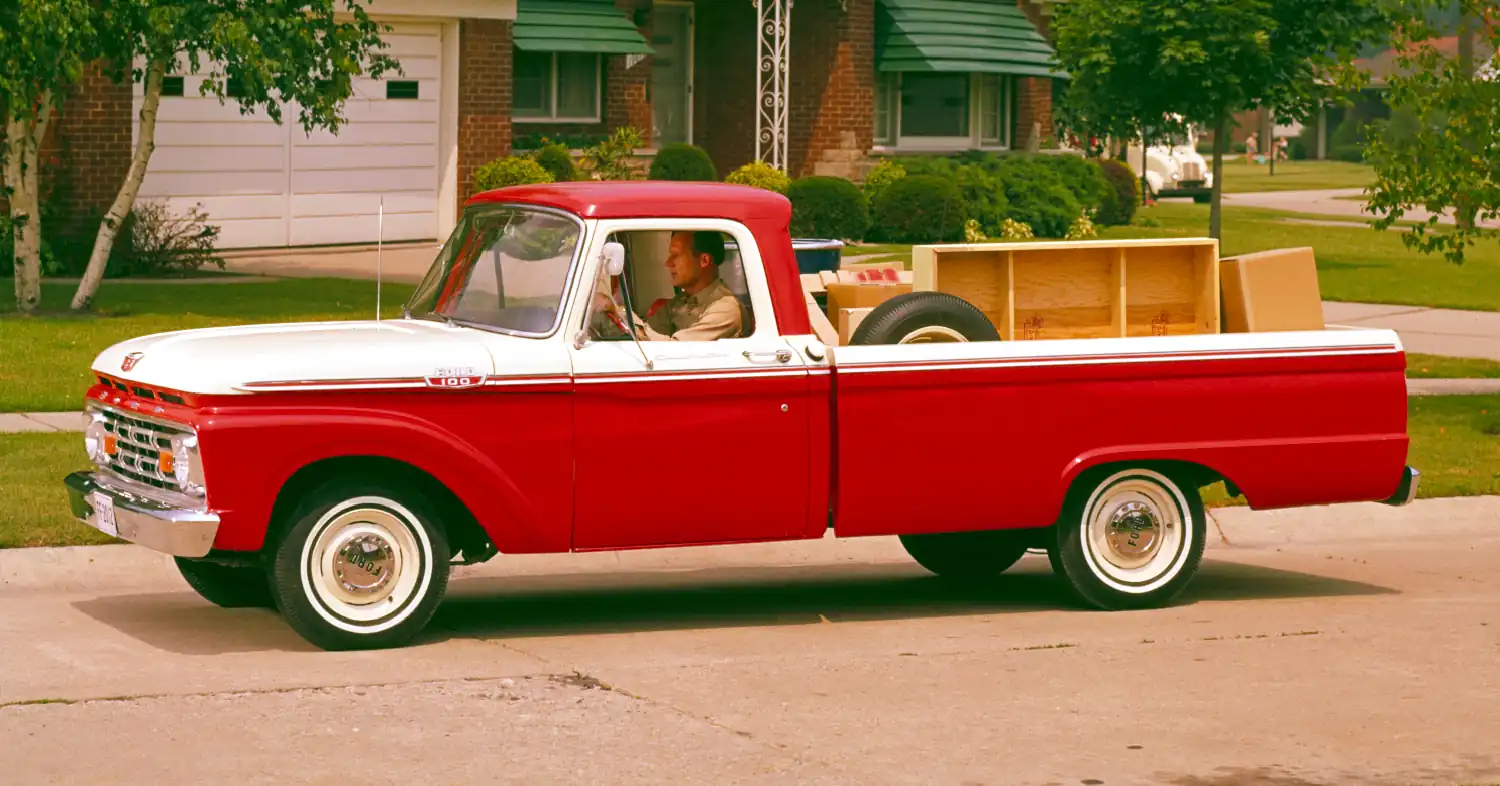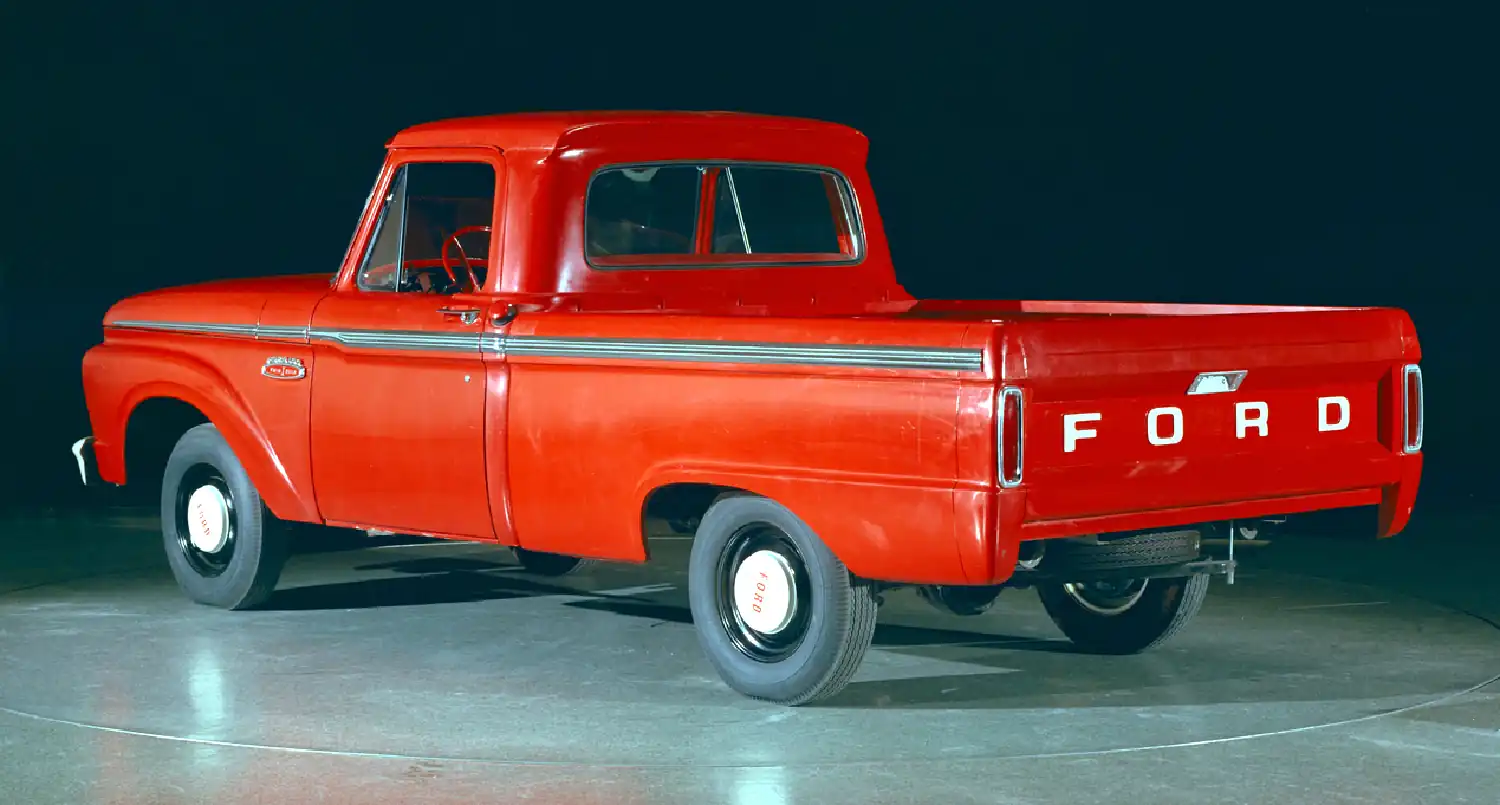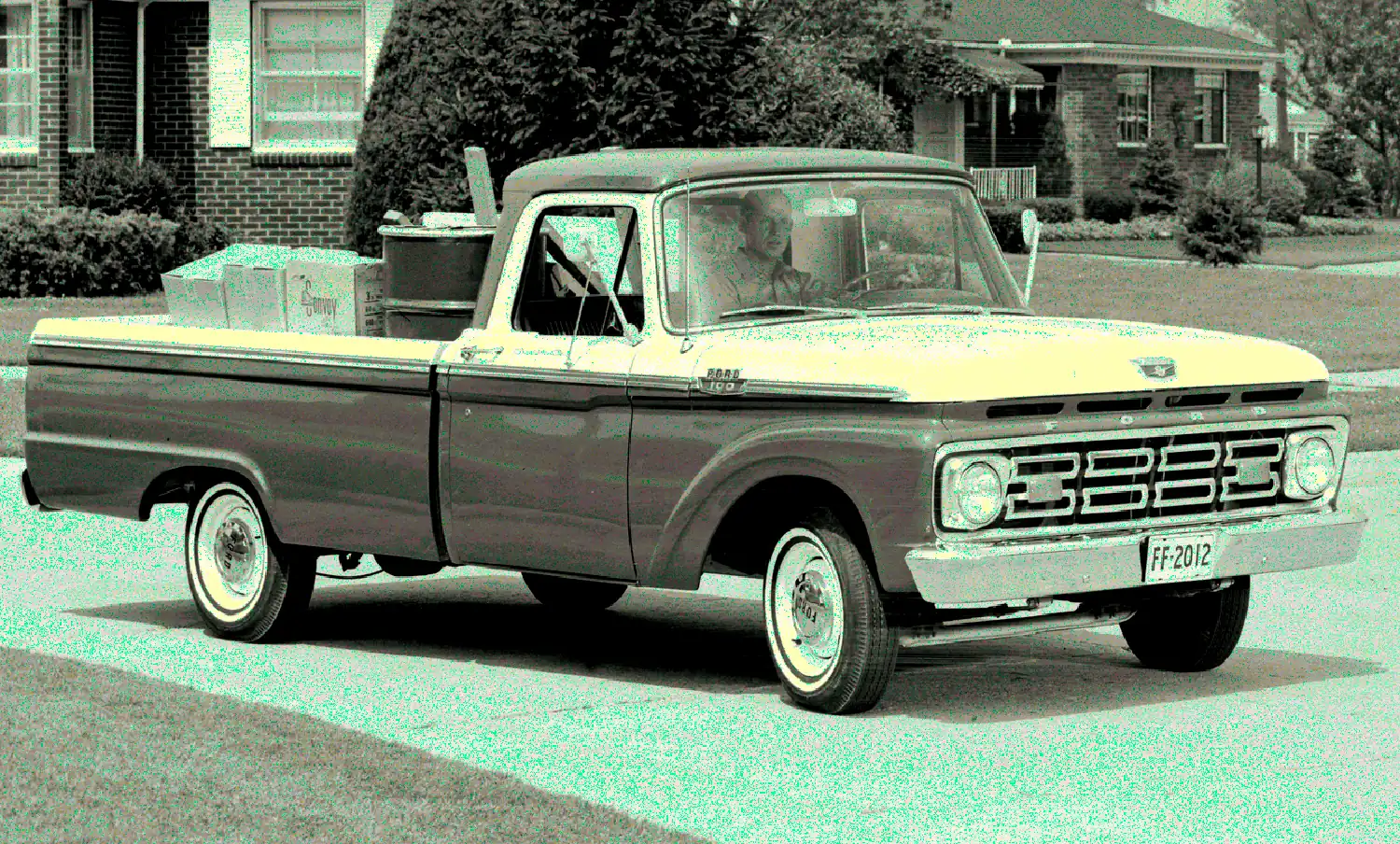
The Ford F-Series pickup truck embarked on its legendary journey in 1948, evolving through generations to become one of the most successful and enduring vehicle lines in automotive history. The 1964 Ford F-100 hails from the fourth generation of the F-Series, produced from 1961 to 1966. This particular year is significant as it marked a return to the conventional separate cab and bed design after a brief experimental period with an integrated unibody structure in earlier models of this generation. This return to tradition, combined with continuous refinements, cemented the 1964 F-100’s reputation for ruggedness, versatility, and broad appeal, making it a beloved symbol of American industry and a quintessential representation of the mid-century pickup truck.
Design and Evolution: The 1964 Ford F-100 maintained the clean, utilitarian lines of the fourth generation, characterized by its flatter front end, redesigned grille, and integrated headlights. Its aesthetic reflected the era’s focus on functionality and robust construction, embodying a no-nonsense approach to truck design. The distinct stylistic cues of this period included a more squared-off appearance compared to earlier generations, yet it retained a charming simplicity that has ensured its timeless appeal. The choice between a conventional bed and a Styleside (flush-sided) or Flareside (fendered) bed provided options for both aesthetic preference and practical application.
Power and Performance Characteristics: Underneath its sturdy exterior, the 1964 Ford F-100 offered a selection of reliable engines designed for consistent power and durability. The primary powerplant options for this year included the 223 cubic inch “Mileage Maker” inline-six-cylinder engine, known for its fuel efficiency and steady torque, making it ideal for daily hauling and general use. For those requiring more robust capability, the 292 cubic inch Y-block V-8 engine was a popular choice, delivering increased horsepower and greater pulling power, suitable for heavier loads and more demanding tasks. These engines, paired with either a three-speed manual transmission (column-shifted) or the optional Ford-O-Matic automatic transmission, provided ample grunt for a variety of tasks, from farm work to light commercial duties, embodying the F-100’s reputation as a dependable workhorse rather than a speed demon. The emphasis was on reliability and sustained performance under load, ensuring the truck could handle the demands placed upon it day after day.
Interior and Practicality: The interior of the 1964 F-100 was straightforward and functional, designed for practicality and durability. Bench seating was standard, providing comfortable accommodation for up to three occupants. The dashboard featured clear, easy-to-read gauges and controls, prioritizing utility over unnecessary frills. While not luxurious by modern standards, the cabin offered a spacious and airy environment, a hallmark of pickups from this era. Materials were chosen for their hard-wearing properties, reflecting the truck’s purpose as a tool for work. Visibility was excellent, contributing to ease of maneuvering whether on the job site or navigating rural roads.

Chassis and Suspension: The 1964 F-100 was built on a conventional body-on-frame chassis, a robust and proven design that provided significant strength and flexibility for various applications. Its suspension system featured traditional solid axles with leaf springs at both the front and rear, a configuration known for its durability and load-carrying capacity. This setup ensured the truck could withstand heavy payloads and rough terrains, contributing to its reputation as a rugged and dependable vehicle. While not designed for performance driving, the suspension delivered a predictable ride characteristic of trucks from its time, prioritizing resilience and utility in its fundamental engineering.
Cultural Impact and Legacy: The 1964 Ford F-100 quickly became a ubiquitous sight across America, serving as a reliable partner for farmers, tradesmen, and families alike. Its widespread adoption solidified its status as an icon of American industry and ingenuity. Today, these trucks are highly sought after by collectors and enthusiasts who appreciate their classic aesthetics, straightforward mechanicals, and the nostalgic connection they provide to a bygone era. Many 1964 F-100s have been lovingly restored or modified, ensuring their legacy continues to thrive on roads and at car shows, preserving their unique place in automotive history. Its enduring popularity is a testament to its original robust design and timeless appeal.
Summary
- Part of the fourth generation (1961-1966) of the Ford F-Series.
- Marked a return to the separate cab and bed design for 1964.
- Offered reliable engine options including a 223 cubic inch inline-six and a 292 cubic inch V-8.
- Available with three-speed manual or Ford-O-Matic automatic transmissions.
- Featured a functional interior with a focus on durability and practicality.
- Built on a robust body-on-frame chassis with solid axle and leaf spring suspension.
- Holds an iconic status as a symbol of American utility and enduring design.
Disclaimer: This article offers general insights based on publicly available information about the 1964 Ford F-100. Specific vehicle conditions or historical details may vary.
Source: Ford & Ford Heritage Vault
AI Assistance: Gemini
